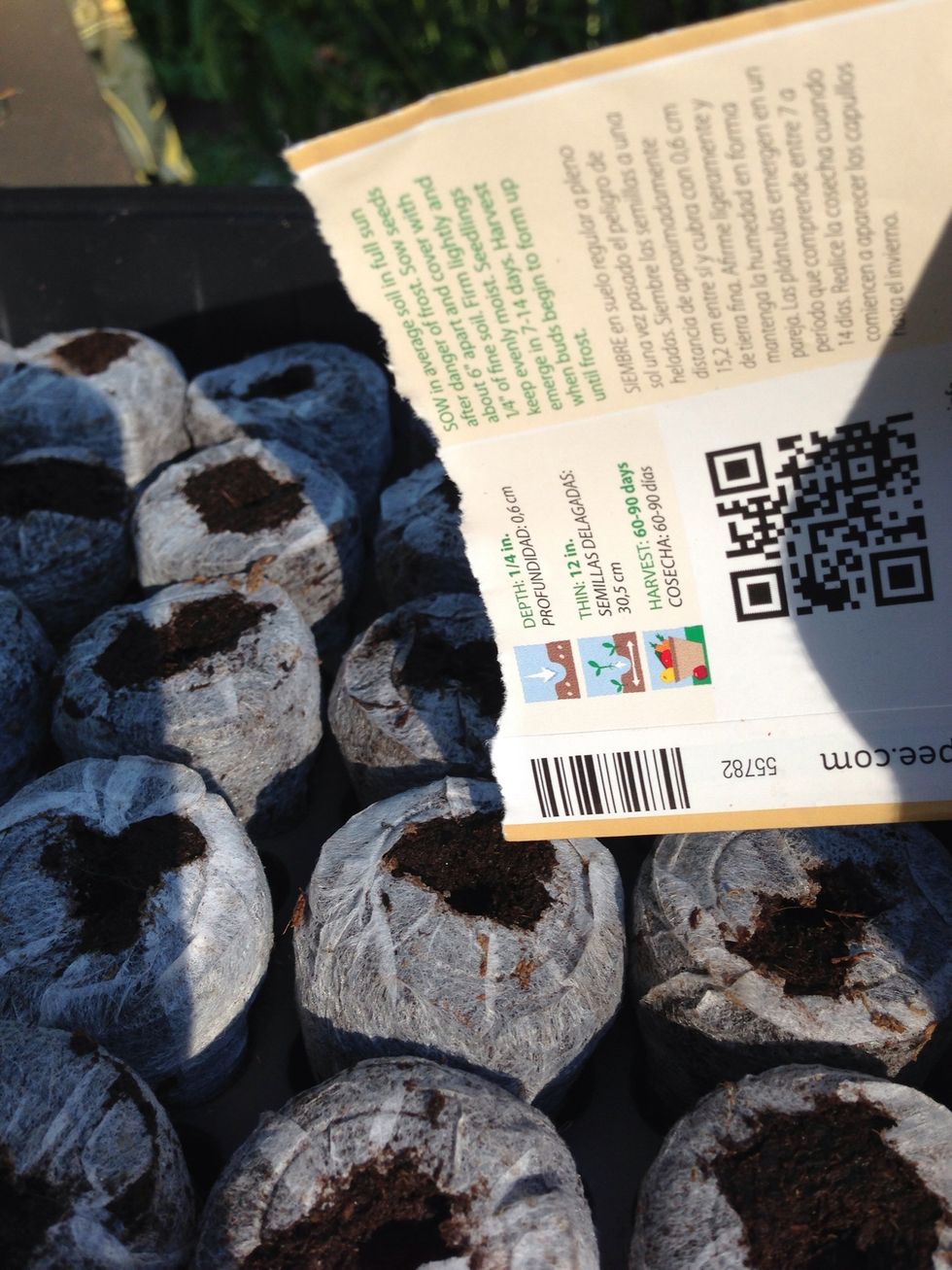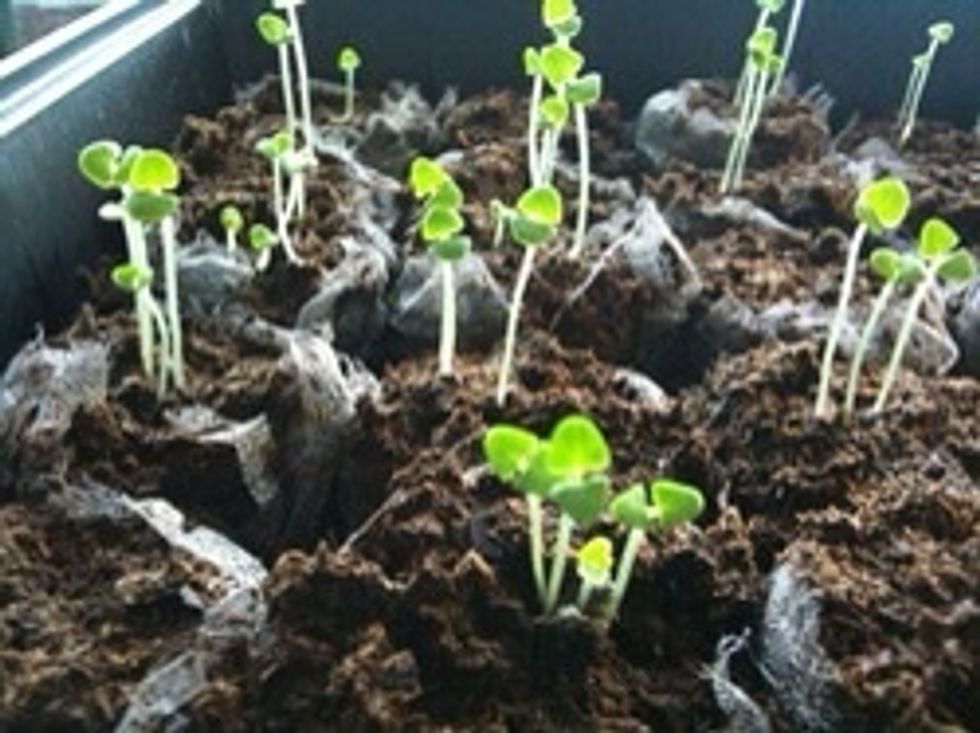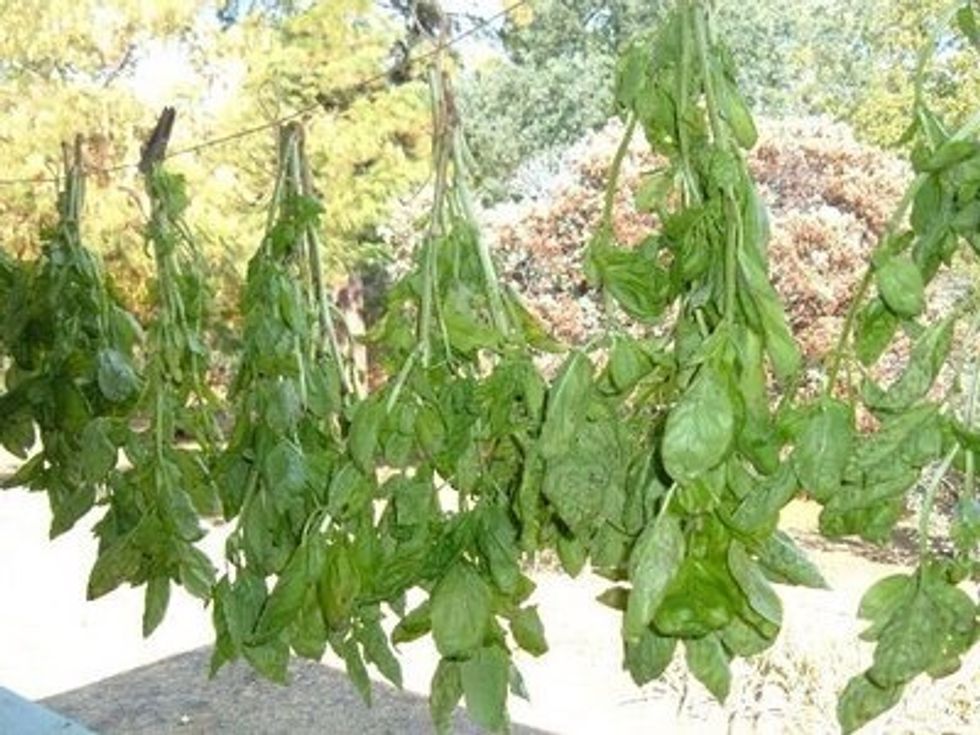How to grow, harvest & propagate basil
Growing, Harvesting & Propagating Basil
201
STEPS
TOOLS
Basil, Ocimum basilicum, is a popular sweet herb of the Mint Family. Basil grown indoors requires at least six hours of sunlight Grows easily from seed ~ Basil loves well drained soil

Starting Basil indoors: grab your mini greenhouse with plastic dome lid. Or grab a clear storage tub.

These are peat pellets. Place them into the mini greenhouse or the clear plastic tub.

Pour warm water over them - they will expand in seconds! Open up/stretch/rip the tops so you can plant the seeds.

Make a hole in the center of the peat pellet for the seed to go into. (I use a pencil, some use straws and let the seeds slide down into the hole). Go 1/4 inch deep or so.

Add a seed or two into the hole you made. Then lightly cover with some soil. Press your finger down, making the top slightly firm.

Cover the greenhouse with a plastic dome. Rotate flat each morning to provide equal sun on both sides.
Lift dome & gently spray the pellets with water every other day or as needed; replace dome top. You are checking to see if the soil is moist.

Basil Week Two (Seed Germination Period is 5 to 10 days)

Basil, Week 3

Basil, Week 5

Once the seedlings have developed two (2) pairs of true leaves, then you can thin out the weakest seedlings in each peat pot. This is when you can begin to use organic fertilizer.
Think of a newborn baby. Babies needs food and to be kept directly out of the sun or they will get sunburned, right? As you grow your basil, think of your seedlings as babies. Treat them as such

Allow adequate drainage ~ after transplanting to a pot, line the base of the pot with dime sized rocks. If transplanting to your garden, pepper your soil with same.
Mother nature provides most of what Basil needs naturally! Basil is an annual plant, and loves the sun! Plant basil outdoors after the last spring frost, in well drained soil

Leaf production slows or stops on any stem which flowers, so you should pinch off any flower stems to keep the plant in production ~ SAVE THOSE SEEDS FOR FUTURE PLANTING

HARVEST. After your Basil is done for the season, the leaves are beginning to yellow or wilt, it is time to cut.

Hang bunches of stems up to air dry. We also keep basil cuttings in water in a little gatorade bottle on our dinner table for easy access - whatever works

This is a picture of what my Basil and Rosemary looked like after cutting and placing into small plastic bottle to begin growing their roots.

My Basil Jungle :)

Companion gardening with Basil - Plant Basil near tomatoes to improve growth and flavor. Basil also does well with peppers, oregano, asparagus and petunias. Do not plant near sage.
I use organic soil & peat pots to grow the babies. In the fall, I cover the way back of my yard with the leaves and every two years, I use that beautiful soil in my gardening.
Basil propagation from cuttings is easy! Share your basil! Take new plantings and give them as gifts! Swap herbs with others! It's free!
PROPAGATION - Take a four to five (4-5) inch basil cutting right below a leaf node. Remove the leaves off the bottom; approx. two inches from the end making sure that this cutting hasn't flowered yet
PROPAGATION - Place the cutting in a glass of water and put it where it can get good sunlight. Use a clear container so you can watch your basil propagation grow root! I use little gatorade bottles.
PROPAGATION - Change the water every few days until you see root growth. Make sure you put the planter in a place where the plant will get sunlight.
PROPAGATION - Once the roots on your basil cutting are two inches or longer, you can plant the cutting in a pot indoors or plant outside.
I hope you enjoyed my guide! Find it online on my website at: www.mindbodysoulessentials.com/basil.html
- Basil plants
- Scissor or garden shears
- Basil seed
- Soil
- Warm Water
- Mini greenhouse (Jiffy)
- Peat pots